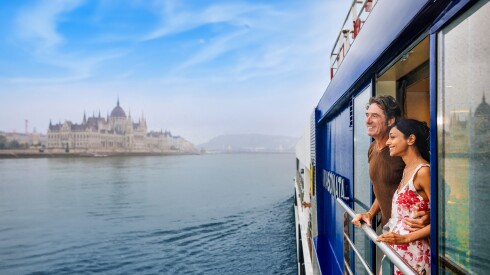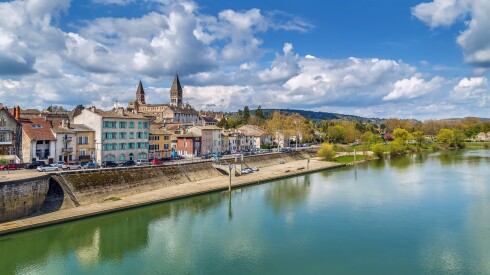What to Do If You Have Two Weeks in Kenya
You can cover a lot of ground if you have two weeks in Kenya—not only enjoying a few of Nairobi’s best restaurants and shops, but also two or three of the spectacular national parks, a visit to the coast, and even, if you’re energetic, a trip to the hippo-filled Lake Naivasha for its epic views of the Rift Valley. Here’s just a handful of the options available to you if you have two weeks in Kenya.
320 Ngong Rd, Nairobi, Kenya
A high-end gastropub set in the green suburb of Karen, Talisman serves some of the best food in Nairobi. The ginger teriyaki tofu, in particular, is delicious, and the menu offers a wide variety to tempt all kinds of palates. Talisman is great for romantic dinners, especially those enjoyed in the pretty gardens lit by coal fire pits, lanterns, and candles. Be sure to book ahead—and note that the restaurant has a calendar of live music and events, so call in advance to see what’s on. An Escape Room experience just opened next door, so a perfect evening could mean a daring breakout followed by a candlelit meal.
Loitoktok District, Rift Valley, Kenya
Positioned in the south of Kenya on the border with Tanzania, Amboselli National Park has spectacular views of the snow-capped, craggy peaks of Mount Kilimanjaro – Africa’s tallest mountain. Renowned as being the best place in Africa to get close to the large population of elephants living in the park, here golden grasslands sit next to swampy, hippo filled springs, and in the skies above the wildlife it’s nothing but lilac, dusky horizons for as far as the eye can see. The elephants aren’t all you’ll see here though – Amboselli is also home to leopard, cheetah, giraffe, lions and more.
Kenya
In what is considered one of the earth’s greatest spectacles, over a million wildebeest make their way from Tanzania’s Serengeti to Kenya in search of lusher grasslands. The great migration is a very good reason to visit the diamond in Kenya’s crown of national parks, the Masai Mara. The most dramatic scenes take place at the river crossings, where the wildebeest slip and crash down the steep embankments of the Mara River into crocodile- and hippo-infested waters and, if they get through that, still have to gallop past the Mara’s high density of lions awaiting them on the other side. The best time to see the migration here is between the months of July and September. Porini Lion Camp is an excellent accommodation choice, with knowledgeable guides and a responsible approach to protecting the delicate Mara ecosystem.
Diani Beach, Kenya
Diani Beach is a 25km strip of pale, sugary sands backed by the cerulean Indian Ocean. As one of the more developed towns on the Kenyan coast, there’s a great variety of restaurants, cafés, bars and shops here. Also on offer are activities from horse riding to kite-surfing and tours of the ancient Kaya Forest. Popular haunts in Diani include the Forty Thieves Beach Bar - renowned for their fun beach parties and tasty pizzas, as well as Ali Barbour’s restaurant – set inside a candle-lit cave which opens out onto the starry night’s sky above. However you choose to spend your time in this idyllic costal location, one thing is for sure: as the sun sets, castling a golden glitter on the sea below, and the beach-front restaurants lay flickering lanterns on the sand, there are few other places in the world you will want to be.
Kenya
Situated in northern Kenya on the banks of the Ewaso Ng’iro river, Samburu National Reserve is a beautiful and arid ecosystem that’s lesser visited than its cousins in the south of the country due to its more remote location. The big draws in Samburu are the different types of wildlife on offer in comparison to other parks. The Grevy’s zebra, for instance, is an elegant creature not found in the south – its stripes are thinner than that of the common zebra, and its frame more tall and horse-like. Samburu is a popular option for those looking to escape the large crowds drawn to famous parks like the Masai Mara.
Ngong Hills, Kenya
For a spectacular hike near Nairobi, head to the Ngong Hills, just a 40–minute drive away. These knuckle-shaped hills offer panoramic views of Nairobi and the surrounding mountain ranges, and you can choose to turn back at any point if you don’t feel like scaling every peak (the highest rises to 8,071 feet above sea level). The easiest option is to leave your car at the Ngong Town entrance and pick up a ranger to guide your walk. Be sure to bring a picnic—the satisfaction of reaching the final peak is best celebrated by sprawling out on a blanket, enjoying a sandwich, and soaking in the views extending out from all sides.
Lake Naivasha, Kenya
As you approach Lake Naivasha from Nairobi, the one-lane, potholed road rises and you are suddenly treated to a truly awesome view of the Great Rift Valley stretching out to the horizon. Shimmering within that vista is Lake Naivasha, a popular weekend destination for Nairobians. The lake itself is beautiful in a prehistoric-looking way, with wispy, jagged trees jutting up from the water and hippos bathing in the midday sun. Along the boggy shoreline, before the water lilies and tropical grasses give way to the open water, it’s easy to imagine ancient creatures wriggling their way up onto land and eventually evolving into the first hominids. While in the area, explore Hell’s Gate National Park and its gigantic gorge, take a boat trip on the lake in search of hippos, and get your fill of the freshly made pizzas at Camp Carnelley’s.
Gogo Falls Road, Nairobi, Kenya
Families would be hard-pressed to find a more memorable place to stay than Giraffe Manor. Located in the leafy suburb of Langata, about a 30-minute drive from central Nairobi, the 1932 family home of a former candy baron was modeled on a Scottish hunting lodge before becoming a sanctuary for endangered Rothschild’s giraffes, for which the boutique hotel gets its name. The ivy-clad brick mansion features 12 light-filled guest rooms, many with gauzy canopy beds and understated furnishings, but the real draw is the airy breakfast room, where you can feed the exceedingly friendly animals as they crane their necks through windows and doors in search of snacks. Afterward, complimentary chauffeured vehicles are on hand to take you to the area’s most popular attractions: at the David Sheldrick Wildlife Trust, the residents being fed are orphaned baby elephants.
KWS Central Workshop Gate, Off Magadi Rd, Nairobi, Kenya
The David Sheldrick Wildlife Trust rescues orphaned baby elephants from the wild, nurturing and raising them through the grief of losing their families, and then eases them back into their natural habitat when they are old and strong enough. The animals are not forced to return to the wild—at around four years old, they are moved from the Nairobi nursery to a new home near Tsavo National Park to help them gain the independence to move on. The baby elephants can be visited every day at 11 a.m., where you’ll see them playing in the mud and guzzling gallons of milk. Guests who choose to adopt an orphan can return at 5 p.m. to watch the babies enjoy an evening snack of leaves before being put to bed.


















